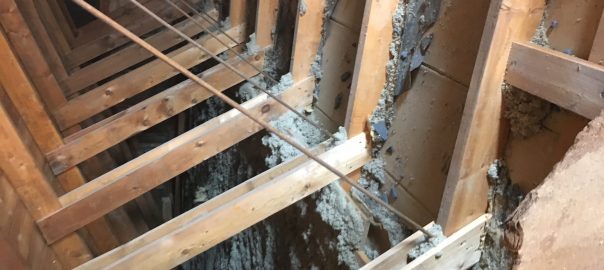How to Repair Pest Damage on Attic Insulation

Many homeowners find that there is a lot left to be done once they have successfully evicted rodents or wildlife from the attic. The major bone of contention for many people in this situation is what to do about the extensive damage to the insulation.
Unfortunately, there are no easy fixes for insulation that has been contaminated or destroyed by a pest invasion. Depending on the specific situation, the remediation can be cheap and quick or extensive and expensive.
The way forward should be left to a professional to decide since you’ll need a lot more than repairing attic insulation. You need attic restoration once the pests have been evicted.
What Attic Restoration Entails
The major task of attic restoration is the get the space back to its original condition before the pest invasion if not better. Some of the problems you are likely to face include;
- Potent odour in the attic and home
- Urine and feces soaked into the insulation, such insulation is considered toxic
- Pheromones that may attract new rodents or wildlife
- Potential rodent entry points – ¼ inch hole is enough for new pests to break in
- Ectoparasites left behind including mites, fleas, ticks and bat bugs
- Debris is strewn around the attic including food debris and nesting material which may be toxic
- Mould growth on affected areas
It is standard practice to see professionals in bio-hazard suits and HEPA filter masks making their way to the attic after pest evacuation. These measures are not as extreme as rodent and wildlife feces and urine can be toxic and spread many serious and even potentially fatal diseases.
Hire a Professional Attic Cleaning Service
Depending on the scale of the damage, there are a few steps that professional attic insulation removal in Toronto will take to restore the attic to its original state. The technicians arrive in full protective gear and professional equipment to get the job done properly and safely.
Vacuuming
Some animal droppings such as squirrels, rats, mice, bats and birds are too small to remove by hand. Professionals use a high-suction vacuum with a filter to pick up the debris. The filter is necessary to avoid releasing pathogens into the air.
It may be necessary to remove the insulation at this point due to excessive contamination. Most insulation cannot be salvaged and must be removed. Experts use a special vacuum that suctions the insulation out of the attic and directly outside to avoid contaminating the rest of the home. You shouldn’t carry toxic insulation through the main house to avoid cross-contamination.
Debris Removal
The larger debris including animal nests and large droppings from raccoons, opossums and other larger critters have to be removed by hand. This is where the bio-hazard suit and mask are essential because these droppings contain pathogens, many of which can be airborne. Animal nests are also full of parasites and must be handled and disposed it safely.
Fogging
The physical removal of the debris is only a small part of the intensive cleaning and sanitizing that needs to be done. There are still pheromones, parasites, mould and bacteria present in the attic. Fogging is done using an electric-powered mist machine that releases a mist of biohazard cleaning agent.
This chemical is safe for the structure but kills pathogens and other dangerous organic matter present in the attic. A special enzyme breaks down feces, urine and grease stains and eliminates the distinct animal odour. Pheromones left behind by the pest can attract other rodents and wildlife including dangerous predators.
The scope of work depends on the specific case. Unfortunately, there is no easy short-cut to deal with contaminated attic insulation. Hire an attic cleaning service in Canada after pest problems in the attic to restore it to its original condition, and more importantly, to keep your family safe from diseases and infections.